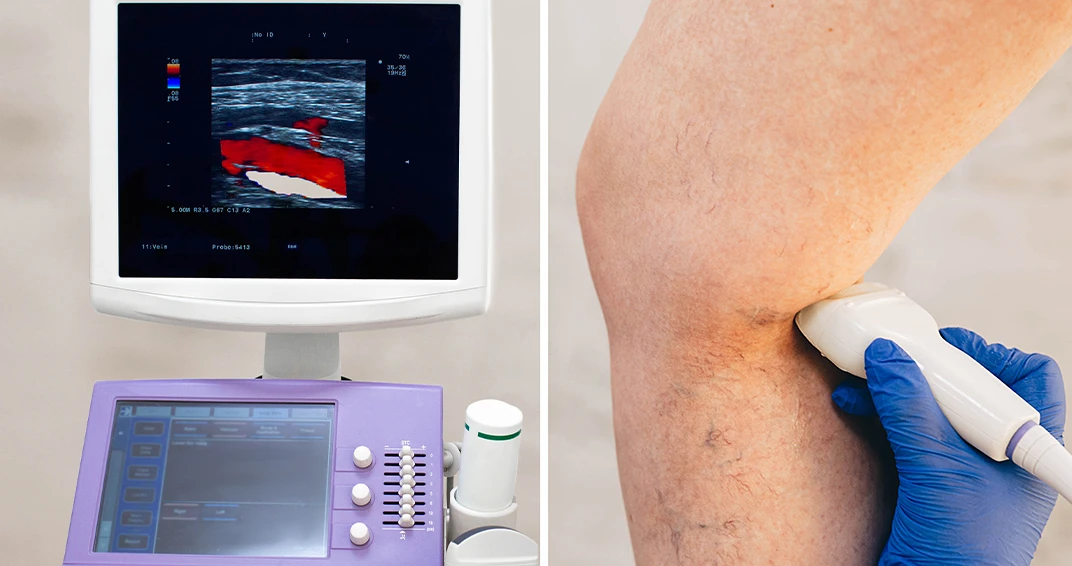Deep Vein Thrombosis / Superficial Thrombophlebitis Treatment
Deep Vein Thrombosis (DVT) and Superficial Thrombophlebitis are concerning medical conditions that require ultrasound examination and consultation with our interventional radiologists.

What is DVT?

DVT, or Deep Vein Thrombosis, is a medical condition requiring prompt medical attention and treatment. DVT is a blood clot in the body’s deep veins (those not visible at the skin surface as they travel deeper by the muscles and bones). These blood clots can lead to pulmonary embolism if they break loose and travel to the lungs, blocking blood flow. An ultrasound examination is required to identify a DVT.
Prompt treatment of a DVT is important. Treatment often includes anticoagulation medication (blood thinners), elevation of the affected limb, and a compression garment.
Many people who are diagnosed with DVT develop a condition called Post Thrombotic Syndrome, which results in intermittent leg pain and swelling that can occur for months or years. This is the result of damage to the valves in the deep veins, causing blood pooling, chronic leg swelling, increased discoloration of the skin, and venous stasis leg ulcers.
If you suspect a DVT, it is important to seek medical attention immediately. Do not wait to see if your symptoms will go away on their own.
What is superficial thrombophlebitis?
Superficial thrombophlebitis (phlebitis) is a medical term for an inflamed, closed, or clotted vein. This occurs in superficial or varicose veins that run close to the skin surface. Superficial veins of the legs can be affected, commonly causing pain, warmth, redness, and inflammation over the closed veins. This condition is treated with a warm compress or heating pad to the affected area, elevation, anti-inflammatory medications such as Ibuprofen, and compression stockings.

Symptoms of superficial thrombophlebitis vs. DVT
Superficial thrombophlebitis displays the following symptoms:
- Slowly worsening tenderness at the skin’s surface
- Long, thin areas of redness along a vein’s path
- Throbbing or burning sensations
- A low-grade fever
- Itchy or swollen skin
Deep vein thrombosis is marked by:
- Significant swelling of the affected limb
- Redness or discoloration of the skin
- A sensation of warmth in the limb
- Notable pain, often in the calf, especially when standing or walking
Schedule an Appointment
If you notice the signs and symptoms of DVT, schedule a diagnostic appointment at Minneapolis Vein Center right away. Early treatment improves your chances of a positive outcome.
Conditions We Treat
Quick Links
Pay your bills securely online with credit cards, debit cards, or checks.
(763) 398-8710
veincenter@mplsrad.com
2800 Campus Drive, Suite 20
Plymouth, MN 55441